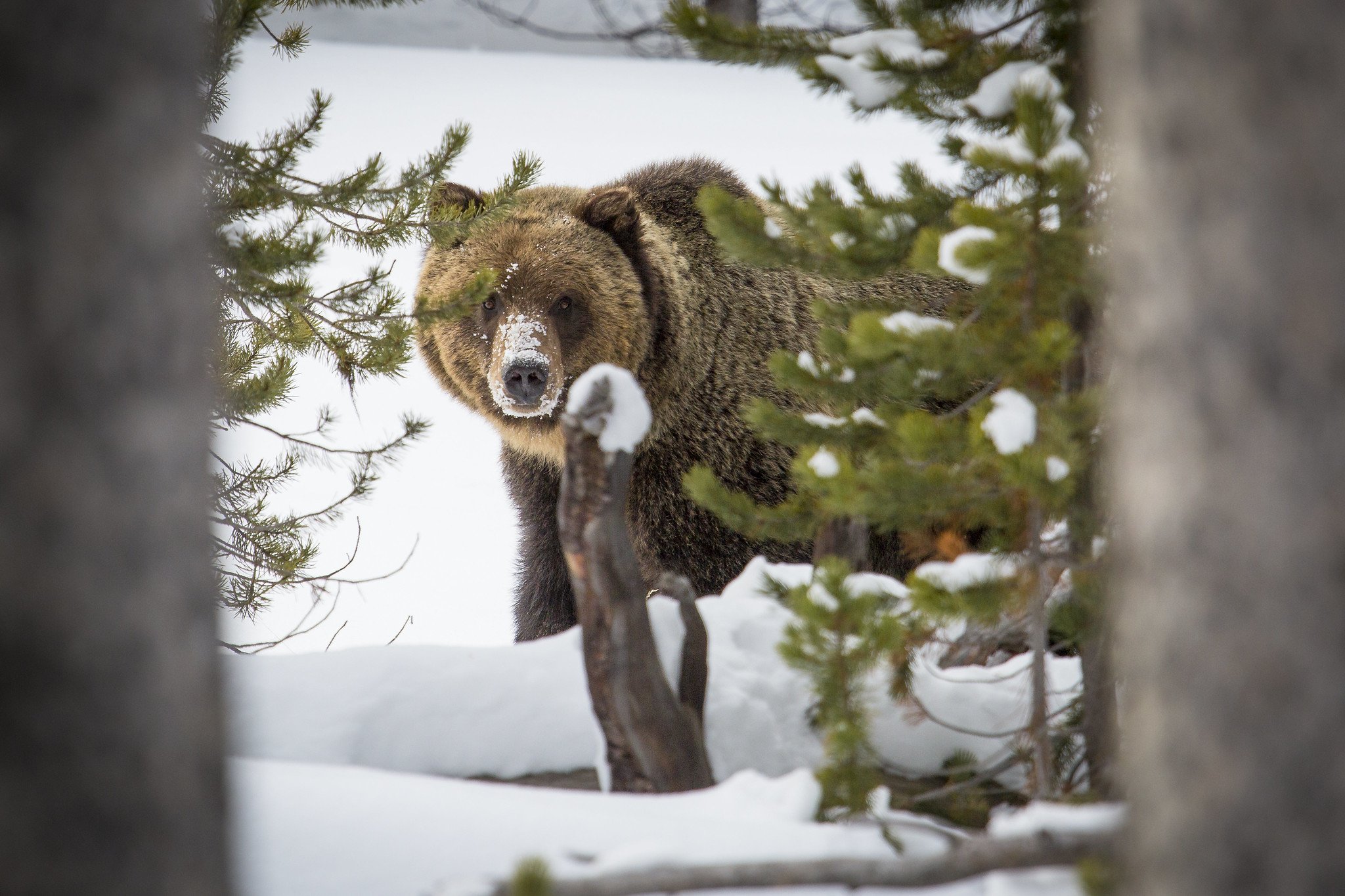U.S. Fish & Wildlife Service begins status review of grizzly bears
This morning, the U.S. Fish & Wildlife Service (FWS) announced the beginning of a 12-month status review of the health and viability of grizzly bear populations in the Greater Yellowstone Ecosystem (GYE) and the Northern Continental Divide Ecosystem (NCDE). The review will contribute to the agency’s eventual determination of whether or not the populations warrant removal from the Endangered Species Act’s list of endangered and threatened wildlife.
A grizzly bear in Yellowstone National Park. The U.S. Fish & Wildlife Service announced it will start a 12-month status review of the overall health and viability of the Greater Yellowstone and Northern Continental Divide ecosystems' grizzly bear populations.
The announcement comes in response to petitions filed a year ago by Idaho, Montana, and Wyoming to remove grizzly bears from federal protections under the Endangered Species Act. The FWS had a legal obligation to respond to the petitions within 90 days with a determination that they either do or do not present substantial credible information warranting a 12-month status review of bear populations. The fact that the determination came well outside the 90-day response period illustrates the complexities at play and is in part due to the states having filed three separate petitions focusing on separate grizzly populations and with differing information and requests.
As per their announcement, FWS has determined the petitions submitted by Wyoming and Montana present substantial credible information warranting 12-month status reviews. Wyoming’s petition focused on Greater Yellowstone’s grizzly population, and Montana’s focused on grizzlies in the Northern Continental Divide Ecosystem of northwest Montana, so there will be status reviews for each population. The agency determined Idaho’s petition did not meet that standard, failing to provide enough relevant information to warrant further review. FWS will now begin a year-long review of the overall health and viability of the Greater Yellowstone bear population, including an analysis of threats facing bears in the region.
To be clear, there is still no proposed delisting rule or determination that grizzly bears should be delisted. At the end of the 12-month review, FWS will issue a determination that Greater Yellowstone grizzlies either do or do not warrant continued listing as threatened under the Endangered Species Act. If it is determined a year from now the population should be delisted, the process will shift gears toward finalizing a new delisting rule, conservation strategy, and acceptable state plans – all with additional public notice and comment opportunities.
The decision announced today was expected not only by GYC, but most of our partner groups. Populations in both Greater Yellowstone and the Northern Continental Divide Ecosystem have been stable and expanding; it would have been difficult for FWS to make a different determination.
We know the importance and magnificence of grizzly bears. They are perhaps the most revered species in Greater Yellowstone and their comeback over the past 40 years has been remarkable – a true conservation success story. Rest assured, just like you we care deeply about the grizzly bear and will keep you posted as things progress.
A grizzly sow and her cubs in Greater Yellowstone. The Greater Yellowstone Coalition is dedicated to ensuring there is a healthy, connected grizzly bear population now and in the future.
Until then, our work doesn’t stop. We know that reducing conflicts, securing core habitat, and creating opportunities for bears to connect with other bears to the north is critical for them to persist and thrive in Greater Yellowstone and beyond. These important principles for the long-term health of grizzlies in Greater Yellowstone will guide our efforts as we closely engage in the status review process, monitor state legislatures, and advance projects important for bears.
Thanks for your passion and support for Greater Yellowstone’s grizzly bears. You can read the announcement from FWS here.
—Scott Christensen, Executive Director
The Greater Yellowstone Ecosystem is the land of 49+ Indigenous Tribes who maintain current and ancestral connections to the lands, waters, wildlife, plants, and more.



